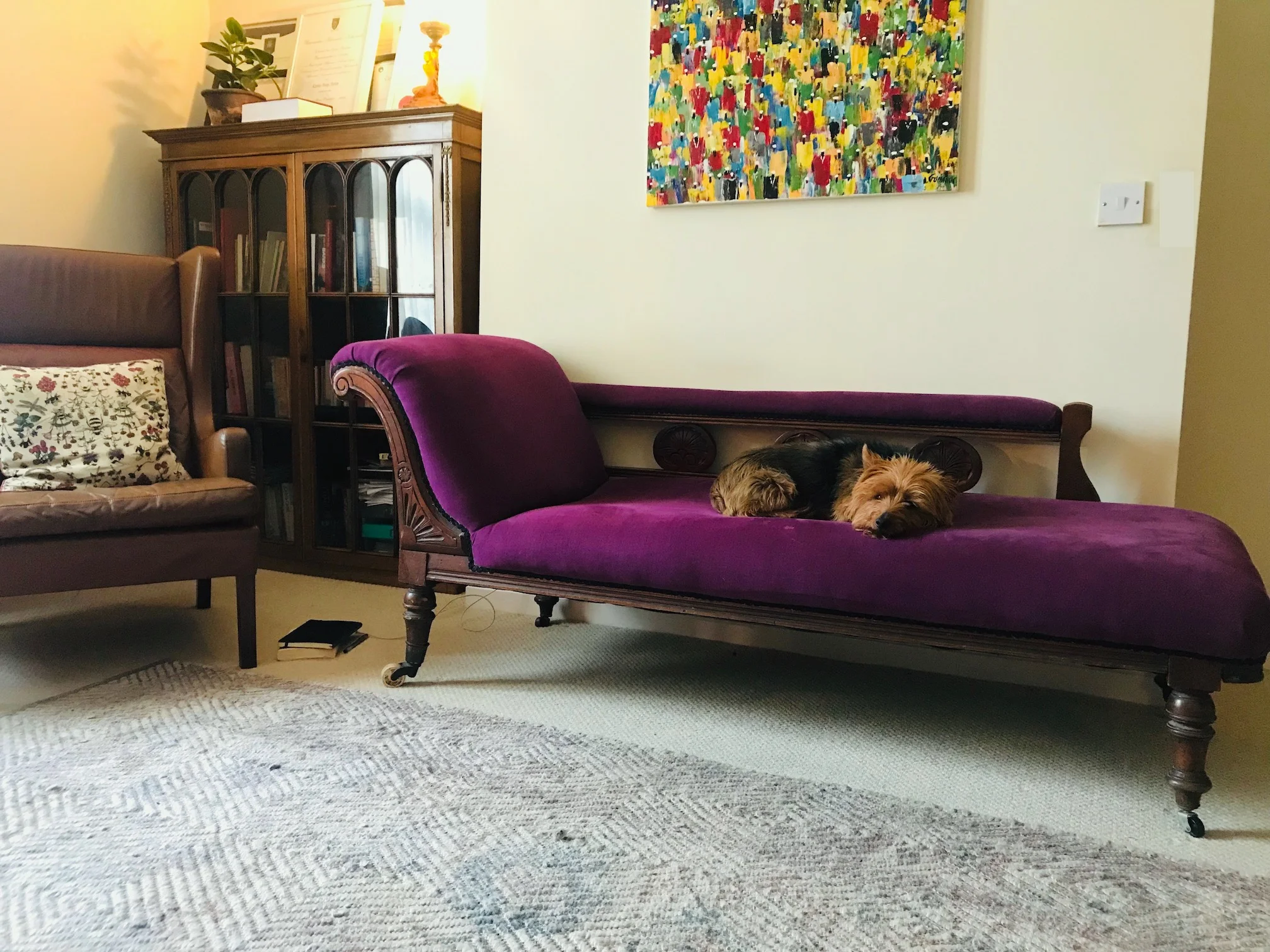In the consultation room at Sandymount Psychotherapy in South Dublin there is a couch, or more accurately it is a chaise longue. Often times clients who come along for counselling and psychotherapy will remark that they thought that the couch was something that only existed in films, or that they thought it was just for decoration. In reality, asking a client to make themselves comfortable on the couch is part of the therapeutic work. But why exactly do psychoanalysts and some other types of psychotherapists and counsellors use a couch for their work?
Early Psychotherapy
One of the earliest, if not the earliest, therapists who used a couch was Sigmund Freud, so we can safely say that the practice of having a patient recline on a couch in front of a psychotherapist is at least 120 years old. There are many reasons why such an arrangement can be beneficial to the work of psychotherapy. Freud freely admitted that part of his motivation for using the couch was because he was tired of having people stare at him for eight hours a day.
At first this may seem somewhat harsh, but there is certainly more things to consider when we are speaking with someone face-to-face, as our body language and facial expressions all contribute to what it is that we are communicating. By removing the face-to-face aspect of communication, we can actually concentrate much more clearly on the words being used. More on this later.
Anxiety, depression, addiction
On a very immediate level, reclining on the couch is more comfortable and relaxing. Therapy sessions can cover a wide range of difficult subjects such as depression, anxiety, grief, sexuality or addiction, so anything that helps to make a patient more comfortable is welcome.
Counsellors and psychotherapists focus on listening
A more important effect of the couch however is that it makes it easier to speak freely, to talk about difficult things without trying to read the reaction of the psychotherapist through their body language and facial expressions. Without the expectations that can accompany face-to-face communication - eye contact, smiling, nodding in agreement etc. - clients can simply get on with the act of speaking and tend to feel less of a need to explain themselves or censor some of the more painful things that they want to say.
By having the psychotherapist or counsellor sit behind a client it makes it easier to avoid the social niceties that can sometimes get in the way of speaking freely. It changes the pace of the work as there is less pressure to ‘catch up’ or fill the therapist in on the goings on since the previous session. By lying on the couch the client can simply begin speaking and see where the words take them. Simply put, the couch makes people feel less self-conscious.
Speaking to a counsellor
Of course, with counselling it is incredibly important that a client feels comfortable speaking to their therapist, that they have a level of trust in them and their abilities and that trust can only come about through face-to-face communication. That is why moving to the couch isn’t something that happens in the first session, and indeed may never happen if the therapist doesn’t see the need to. Each patient is unique and singular, and no two courses of treatment are the same and it may well be the case that the couch isn’t needed.
The aim of Counselling and Psychotherapy
The couch therefore is helpful but not essential to a successful outcome. Ultimately what matters is that as a client you feel comfortable and engaged in the work that you do with a counsellor or psychotherapist. The aim is always the easing of your suffering and sometimes that is helped by putting your feet up and lying back.
If you would like to speak with someone about counselling, psychotherapy or psychoanalysis, contact us.
